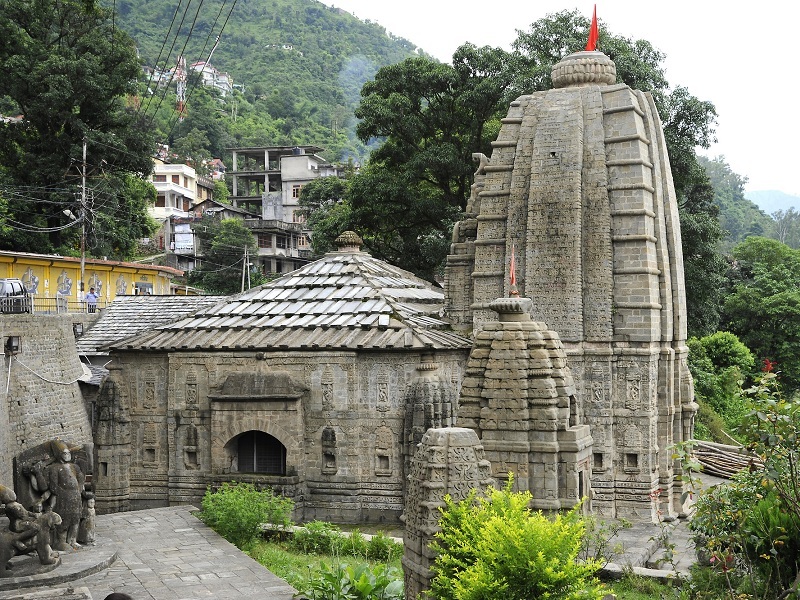
Trilokinath Temple is situated in Udaipur district, in Lahaul of Himachal Pradesh, and is around 45 km from Keylong, the district Headquarter of Lahaul and Spiti. The uniqueness of this beautiful early medieval temple is that the deity inside the sanctum is revered by both the Hindus and Buddhists. Hindus consider Trilokinath as Bhagwan Shiva, and the Buddhists consider the murti as Arya Avalokiteshwar, while the Tibetans refer to him as Garja Fagspa‘. This temple is considered as one of the most sacred teerthsthals, and as per local beliefs it stands next only to Kailash and Mansarovar.
The approach road to the temple is through beautiful Himalayan high altitude landscape, and the road climbs up from the left bank of the Chandrabhaga after crossing a small bridge. The white painted Trilokinath temple is located at the end of a small village on top of a cliff, and is surrounded by snow peaks and coniferous trees at a distance.
While as per some local claims this was originally a Buddhist monastery, a brief look at the existing temple architecture and a study of the original pillars of the temple place it roughly at the time when King Lalitaditya was ruling Kashmir (8th century CE). According to historians Hutchinson and Vogel, the temple was originally built as a Shiva temple, but was later made into a Buddhist place of worship by Padma Sambhava when the Tibetan form of Buddhism spread in the Himalaya, sometime in the 12th-13th century.
Architecture-wise Trilokinath temple is a representative of the Eastern India-Kashmiri style, which arrived and was prevalent in the hills during the reign of Lalitaditya of Kashmir (724-750 CE). While major part of the Trilokinath temple was renovated or rebuilt at a much later period, the original column bases of the antarala inside the temple and the carvings on the doorway to the sanctum show artwork characteristic of the 8th century. The murti inside the sanctum is of a later period, and according to Goetz, the present lamaistic image of Avalokiteshvara-Trilokinath belongs to the 12th c. CE art style. While doing temple pradakshina remains of the older stone temple are clearly visible, parts of which are now painted golden. There is also a prakara or a drainage pipe in the temple wall (a part of the original temple structure) coming out from the level of the sanctum platform, which was built during original temple construction to drain out the water or milk poured over Shiva inside the sanctum. The temple courtyard has a covered nandi mandapa, holding a Shivalinga and a Nandi. The temple is built in the classical nagara style, and shows a curvilinear stone tower (shikhara) crowned with the characteristic amalaka. There is a sukhanasa (antarala or vestibule), and a pyramidal roofed covered hall or mandapa, typical of the eastern Indian temple architecture of the 7th-8th centuries.
Every year a festival named Pauri is held there in August for three days, when both Hindus and Buddhists gather to offer prayers. While visiting this early medieval temple, devotees and heritage travelers should not forget to do the pradakshina or circumambulation of the temple, in order to see the remains of the original stone temple.